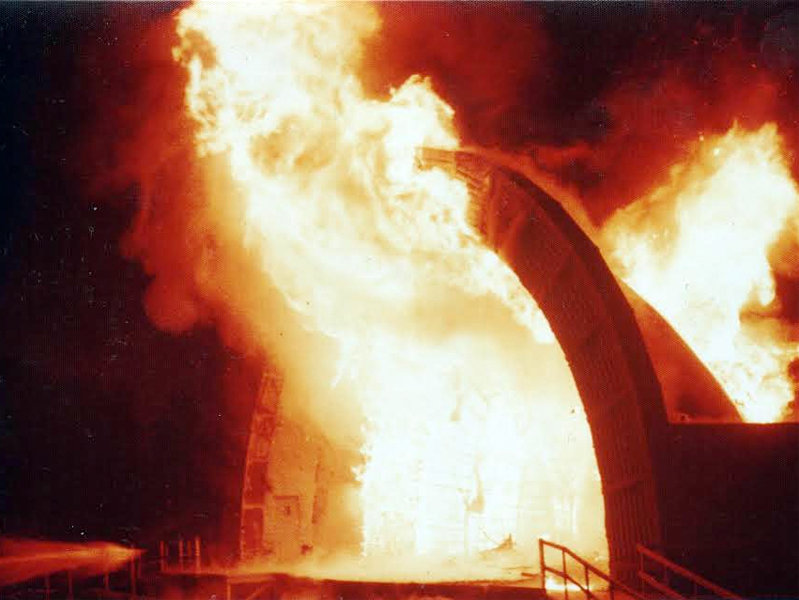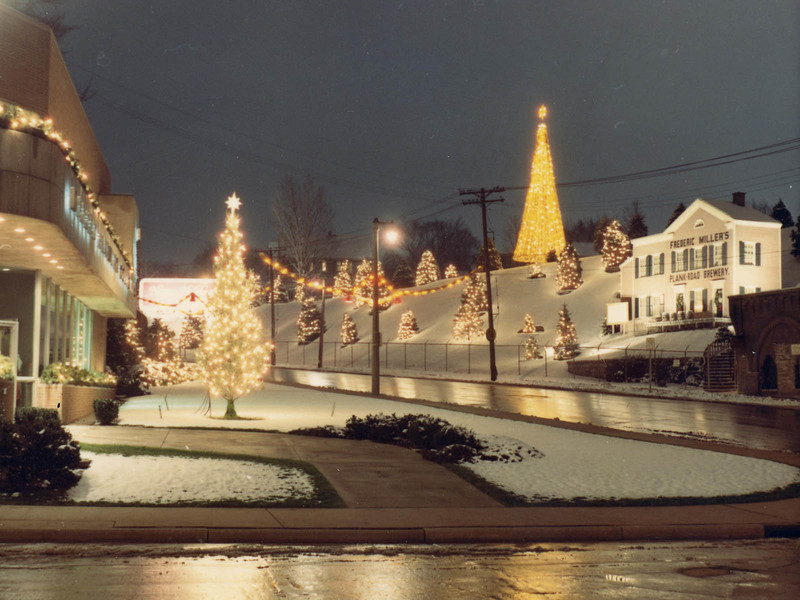Who doesn’t love an old firehouse? Like you, I once thought it would be cool to live in an old one. You know, big open-concept place with high ceilings, history inscribed in every detail. Plus, you could slide down the brass pole to get to breakfast quickly.
The decommissioned Milwaukee Fire Department Fire House, Ladder Company No. 5, at 1945 N. Bartlett Ave., is one of those old places I’ve long suspected was ripe for such a conversion. It's life as a firehouse ended in 1914, and for decades it’s been used by Kortsch Storage, which is headquartered in an awesome building at 2403 N. Maryland Ave.
Thanks to our recent office move, we had some stuff at Kortsch and yesterday, while onsite to sort through our things, I got an impromptu tour of the firehouse. (Because it was unplanned, I didn't have a good camera with me, so I apologize that some of the pictures are grainy.)
Hey, it pays to ask.
German-born architect – and Milwaukee firefighter – Sebastian Brand designed the two-story firehouse that was built in the High Victorian Italianate style in 1886. It’s a cream city brick structure sitting on a rusticated limestone foundation. There is eye-catching decorative brickwork just above the doors and near the eaves.
The building doesn’t appear to have changed all that much over the years, thanks in part to the fact that no one ever converted it to a residence.
On the north exterior wall, a ghost sign advertising Kortsch Storage can still be seen. Engine Co. No. 5 moved up Bartlett to a lovely old house on Park Place in 1914 and after a string of tenants – including an MPS social center (presumably like one named for the Beulah Brinton in a decommissioned Bay View firehouse) and the Irving Athletic Club – Kortsch bought the building in 1924 for $10,000.
In 1924, Kortsch added a freight elevator to the northwest corner and a small tower was added to make the lift – which runs off an old Allis-Chalmers motor in the tower – possible.
There are wainscoting and weathered hardwood floors throughout. At least one gas jet still remains, as does all the decorative molding around the windows on the interior.
Some of the brick pavers that once stretched from the building to the street survive outside the entrance, as does woodwork in the staircases.
My favorite detail is the swooping, curved molding atop the wainscoting in the staircase between the first and second floors.
There is a circular hole – and two rectangular ones – in the first-floor ceiling. I'd guess the round one was once pierced by the brass pole (which is no longer there). I'm not sure what purpose the others – one where the ceiling meets the north wall, the other along the south wall – served.
In 2003, the station house was designated an historic structure by the Milwaukee Historic Preservation Commission and the Milwaukee Common Council and, as is always the case, a report was prepared as part of the process.
"The Milwaukee Firehouse Ladder Co. No. 5 is significant as an important example of civic architecture from the 1880s," reads the report. "It was a symbol of the city’s first attempts at standardizing station house design in an attempt to provide a state of the art facility that was economical as well as recognizable to the populace.
"It is also significant as the earliest surviving station house designed by Sebastian Brand, a Milwaukee firefighter who was elevated to the role of Fire department architect and who put his distinctive stamp on station house design for over 20 years. Brand was the first municipal employee assigned to design buildings for the city and left a legacy of finely detailed High Victorian Italianate structures, of which only a small number survive."
According to then-fire chief Foley, Brand was not paid extra for his designs, nor was he paid for the work he did to supervise the construction of the firehouses he designed.
If you’d like to read the entire 17-page report, which is quite interesting, you can download a PDF here.
Born in Brooklyn, N.Y., where he lived until he was 17, Bobby received his BA-Mass Communications from UWM in 1989 and has lived in Walker's Point, Bay View, Enderis Park, South Milwaukee and on the East Side.
He has published three non-fiction books in Italy – including one about an event in Milwaukee history, which was published in the U.S. in autumn 2010. Four more books, all about Milwaukee, have been published by The History Press.
With his most recent band, The Yell Leaders, Bobby released four LPs and had a songs featured in episodes of TV's "Party of Five" and "Dawson's Creek," and films in Japan, South America and the U.S. The Yell Leaders were named the best unsigned band in their region by VH-1 as part of its Rock Across America 1998 Tour. Most recently, the band contributed tracks to a UK vinyl/CD tribute to the Redskins and collaborated on a track with Italian novelist Enrico Remmert.
He's produced three installments of the "OMCD" series of local music compilations for OnMilwaukee.com and in 2007 produced a CD of Italian music and poetry.
In 2005, he was awarded the City of Asti's (Italy) Journalism Prize for his work focusing on that area. He has also won awards from the Milwaukee Press Club.
He has be heard on 88Nine Radio Milwaukee talking about his "Urban Spelunking" series of stories, in that station's most popular podcast.







